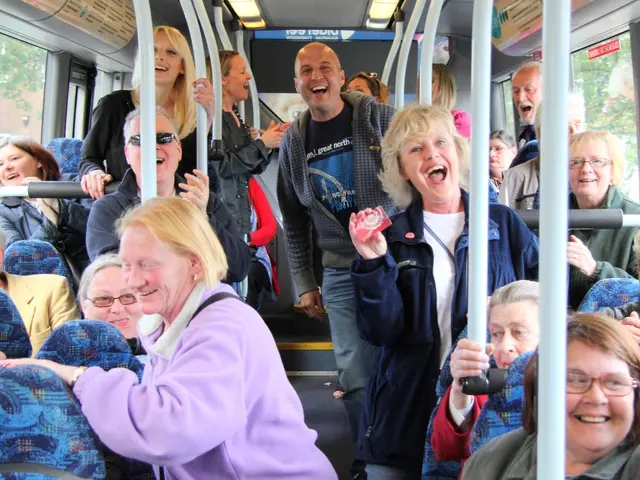Hospitalized Patients with Public Coverage Face Protracted Delays in Care Settings
HCM CITY STRUGGLES WITH OVERCROWDED HOSPITALS AND LONG WAIT TIMES
HCM City faces overwhelming patient numbers seeking medical care at public hospitals, leaving many to wait for hours in long queues. This issue is largely influenced by the growing demand for health services due to expanded health insurance coverage.
Under the Law on Health Insurance, public patients enjoy coverage ranging from 80 to 100 percent. The increasing influx of health insurance patients shows no signs of slowing, leading to overcrowding in major hospitals and district-level facilities.
At the forefront of the crisis is Chợ Rẫy, the largest public hospital in the south, where patients are required to queue from early morning, with hundreds still waiting for examination by noon. The hospital sees an average of 6,000-7,000 outpatients daily, sometimes even exceeding 8,000. The hospital also accommodates 2,500-2,800 inpatients and treats 350-400 cases in the emergency department each day.
The HCM City Oncology Hospital grapples with immense pressure due to the perpetually increasing number of cancer diagnoses. Patients often arrive early in the morning in hopes of completing treatment and returning home the same day to save accommodation costs, which further adds to the overloading in the morning. The hospital's capacity has not been proportionally increased to meet this growing demand, leading to extended waiting times. To address this, the hospital has extended its examination and radiation treatment hours, and encourages patients to adopt online appointment booking, payment, and result retrieval to reduce hospital time.
Thủ Đức City Hospital experiences a surge of health insurance patients every day, with many arriving from early morning through noon. The lobby, corridor, and clinic areas are consistently congested as a result. At Hóc Môn Regional General Hospital, the number of patients has risen to 1,700 from 1,400-1,500 in recent times.
Factors Affecting Hospital Overcrowding
Patients with health insurance wait for examination and treatment at Chợ Rẫy Hospital in HCM City. - Photo sggp.org.vn
- Increasing Patient Volume: Expanding health insurance coverage fuels the influx of patients seeking healthcare services, often leading to overcrowding.
- Growing Healthcare Demand: Projections suggest HCM City will handle over 51 million outpatient visits and more than 3.8 million inpatient admissions annually. This remarkable increase in demand creates pressure on hospital infrastructures and exacerbates overcrowding.
- Hospital Mergers & Redistricting: Recent changes to HCM City's healthcare infrastructure, including hospital mergers and redistricting, can introduce temporary inefficiencies and add to stress on major hospitals as they adapt to new operational structures.
- Healthcare Infrastructure Challenges: Despite plans to improve healthcare facilities, the current infrastructure often falls short of meeting the city's growing needs, auguring overcrowding and extended wait times for patients.
- Recent Health Concerns: A new wave of COVID-19 cases in the city may further hamper the situation by diverting resources to control the outbreak, potentially causing longer wait times for those seeking non-COVID care.
- The expansion of health insurance coverage results in a growing number of insured patients seeking healthcare services, leading to overcrowded hospitals such as Chọ Rẫy, the largest public hospital in the south.
- With projections suggesting that HCM City will manage over 51 million outpatient visits and more than 3.8 million inpatient admissions annually, the city faces a significant increase in healthcare demand, further contributing to hospital overcrowding.
- HCM City's healthcare infrastructure challenges, including recent changes like hospital mergers and redistricting, can lead to operational inefficiencies and increased pressure on major hospitals.
- While efforts are being made to improve healthcare facilities in HCM City, the current infrastructure often fails to meet the city's growing needs, contributing to hospital overcrowding and extended wait times for patients.
- The recent surge of COVID-19 cases in the city might exacerbate the situation by diverting resources to control the outbreak, potentially causing longer wait times for those seeking non-COVID care.
In the realm of workplace-wellness and mental-health, it's crucial for organizations to support their employees' health, offering resources for managing stress and ensuring prompt access to mental health services in order to maintain a healthy and productive workforce. Science and technology also play a vital role in addressing healthcare challenges, providing innovative solutions for diagnosing, treating, and managing medical conditions to improve health-and-wellness outcomes in cities like HCM City.








